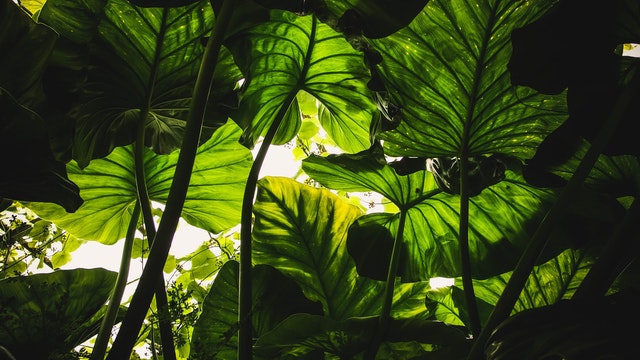In the case of a hard frost, horticultural fleece can be used in an emergency to protect vulinerable plants or tender flower buds, and a deep mulch of bark chips or straw will help prevent roots being frozen in the ground. Deep snow is very heavy and can easily break branches, so try to remove it from small trees and shrubs if possible. Smaller plants will be protected under an insulating layer of snow, so leave them covered. Don’t walk on lawns when the ground is frozen or waterlogged as you will damage them.
Heat can also be a problem, but will only really affect those plants which prefer cool damp conditions such as rthododendrons and camellias. Most platns will recover even if they look very unhappy, and again mulching the ground will help to keep the soil moist.
Strong winds and gales can do a great deal of damage to any garden, and if your area is susceptible make sure you keep up to date with the maintenance of tree stakes and plant supports. Be vigilant about looking at the weather reports and try to be as prepared as possible for any extreme weather conditions.
Drought
Drooping leaves are the first sign of a plant that is suffering from lack of water; they may then become brown around the edges or fall off. The plant’s best defence against serious drought is to drop all its leaves, but healthy, well-established plants should recover.
If you have stored rain water use a very slow trickling hose pipe at the base of the plat, rather than a quick splash to get the water deep down into the roots. For water until they become havy, and use saucers under larger pots which will act as a reservoir.
Mulching will prevent water loss so use bark, compost or gravel on top of the soil in the garden and in containers. Plants that have been in a container for a few years may have become root bound, which means there is little soil left, only roots. The plant will begin to struggle, so either put it in the ground or into a larger container with new compost.
Only newly planted ground needs irrigating, and established plants should manage without any watering even in dry weather providing they are the right plats for the conditions. Over-watering little and often will sopt plants from establishing a deep root system, making them less able to withstand drought. An established mixed border may have new planting each year as perennials are lifted, divided and replanted, but if this is done in the spring or autumnrather than the summer, watering can be kept to a minimum. Only water after the sun has gone down in the evening to allow the soil to soak up the moistrue and prevent evaporation. Sometimes if a plant is stressed due to disease or damage it may require extra water to help it back to full health.
Tap water is expensive and requires a great deal of energy to produce so using it ot water a garden is a luxury which is now becoming less acceptable. The alternative is storing rain water and there are now a great many ways to do this whatever the size of your garden. It is also possible to use grey water from washing machines and baths but this must to be done correctly to prevent contaminating your garden.
Watering established lawns is also unnecessary in the UK. If there is a drought they will require unrealistic amounts of water to keep them green which is neither economic nor environmentally sound. Lawns may look dead and brown in a hot summer, but so will everyone else’s and they will recover after the first good shower of rain. As with all the other planting in the garden, good lawn maintenance will help it survive a drought.




